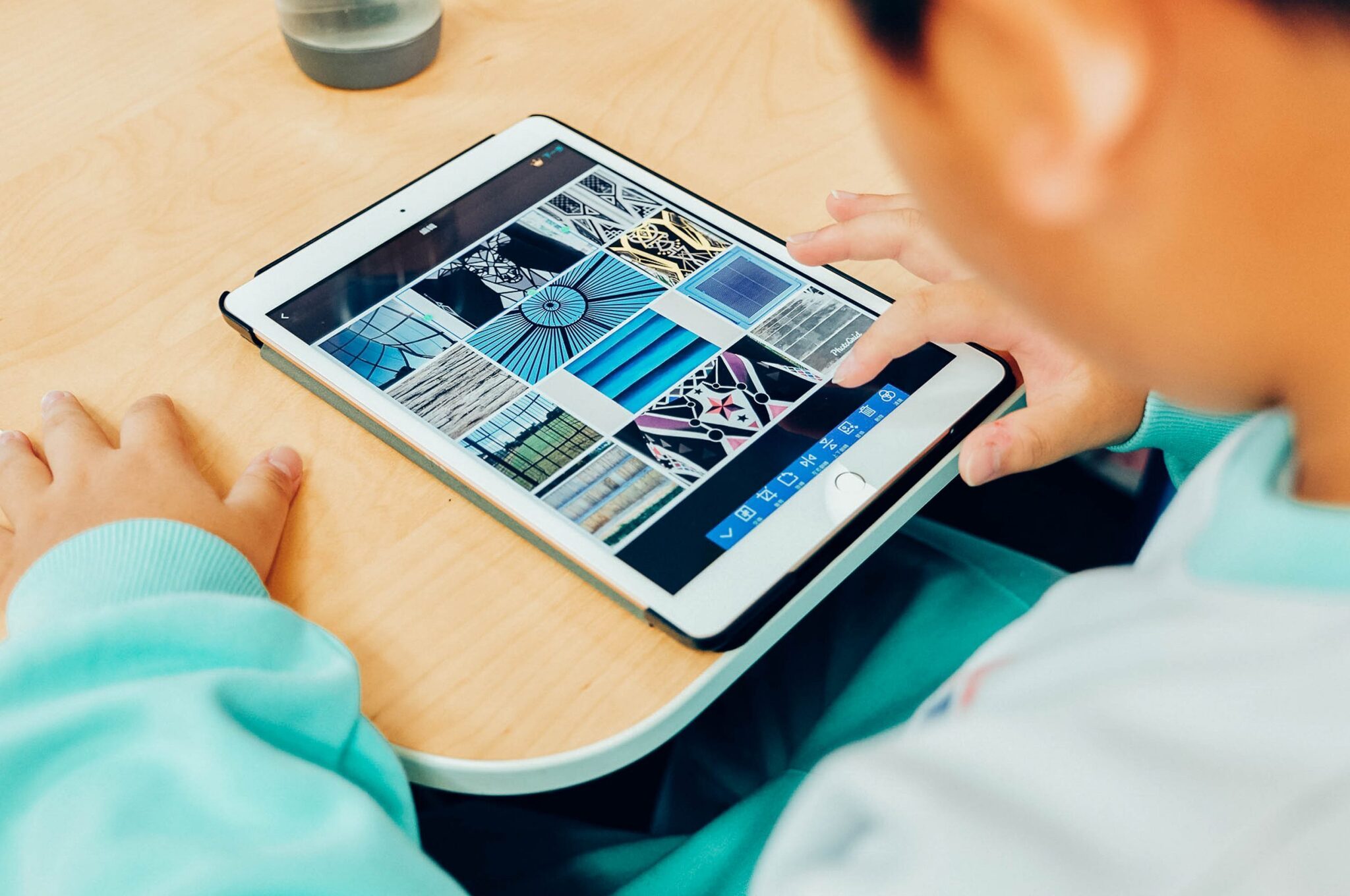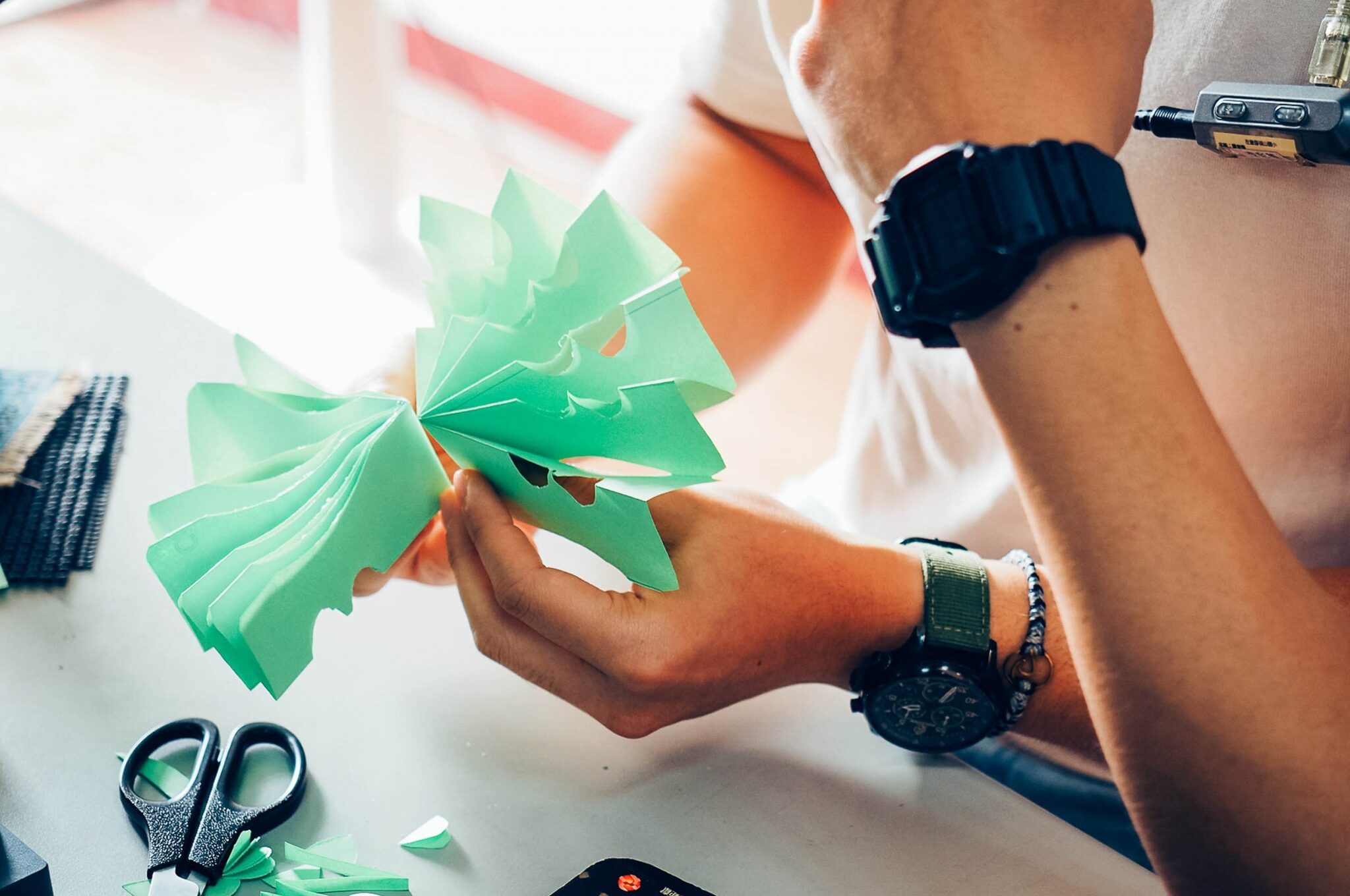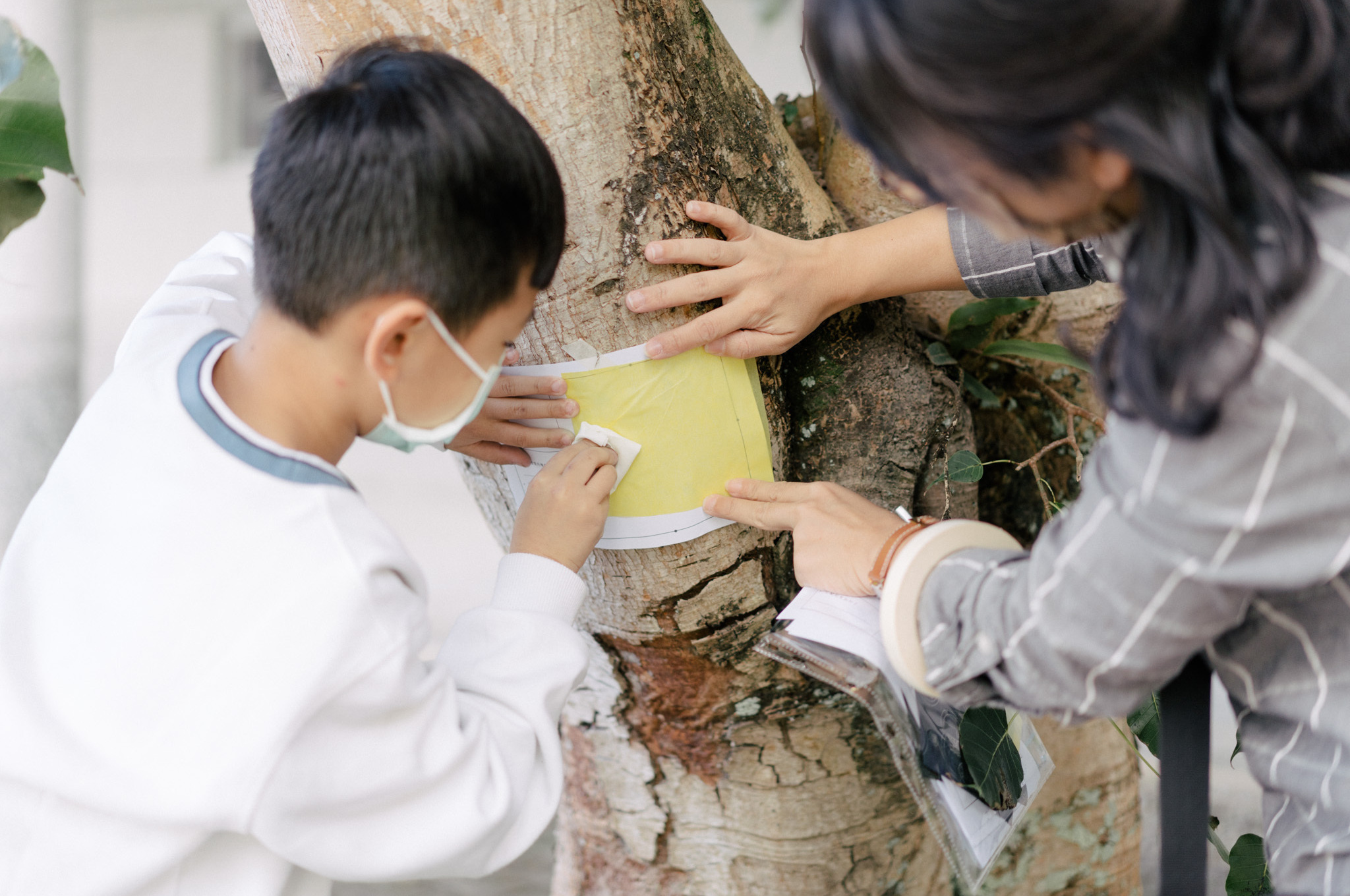Education Projects
- Aesthetic-experimental-course
Snapshot Montage
The introduction of aesthetic experimental courses began with Snapshot Montage, initially designed for freshman architecture majors at Tunghai University. This exercise involved students searching for common objects or elements in the campus environment, collecting a series of images, and arranging them in photo grids. Besides developing their photo composition skills, students were required to observe environmental details and present their personal interpretations. To adapt the course for younger students, we transformed the concept into a “puzzle,” making the idea of “collage” more familiar and engaging for children.
In early 2020, we conducted experiments and promoted the course in two elementary schools in Taitung City. Initially, we guided the students by asking questions like “Look, what is this?” to encourage them to observe visual elements such as colors, lines, and shapes in their environment, rather than merely identifying objects by name. Using digital devices, specifically tablets, the students captured their own discoveries. Later, in the classroom, they used an image collage application to edit the photos they had taken, creating multiple themed collages. Finally, they uploaded and shared their creations with their classmates.
The advancement of digital tools and sharing services has significantly simplified the process of image editing. As students instinctively manipulated images to create snapshot montages, they also unconsciously engaged in visual recognition, interpretive operations, and narrative expression. This course expanded the learning experience beyond the classroom to the campus environment and further to the digital platform. It not only facilitated students’ observation and collection of materials from their local surroundings, deepening their understanding of their environment, but also encouraged the formation of perceptions related to the environment, arts and design, life, and cultural legacies.

-

- Aesthetic-experimental-course
Digital Decoupage
Digital Decoupage, the second aesthetic experimental course promoted by CRIT-AADE, was developed by Professor Jen-Hwang Ho from the Graduate Institute of Architecture at NYCU. This course follows a three-stage process, progressing from observation to digital image manipulation, and culminating in creative interpretation. In the first stage, students explored the campus flora, observing patterns in flowers, leaves, veins, and branches. They documented their findings through photos, sketches, or frottage imprints, demonstrating their understanding of natural science and geometric logic. In the next stage, students were introduced to digital modeling and visual programming using software such as Rhino 3D and Grasshopper. With simple preset procedures, they generated solid geometric forms like polygons, pyramids, and spheres, visualizing the mathematical order inherent in natural forms. This stage highlighted that, with fundamental algorithmic knowledge, one can create a variety of organic shapes. The students then compared these digitally generated forms with their initial observations. They also utilized laser cutting, 3D printing, and other technologies to produce real objects from their digital designs. Traditional environment familiarity courses typically start with naming and identifying objects within a specific setting. However, this approach often limits perception to mere identification. In Digital Decoupage, students were encouraged to delve deeper into the meanings behind names. Regardless of whether they knew the plant’s name, they could still observe its geometric structure and organic order. These observational “filters” opened up new possibilities for aesthetic perception beyond simple identification, fostering further creative manipulation and interpretation. -

- Aesthetic-experimental-course
Snapshot Montage
The introduction of aesthetic experimental courses began with Snapshot Montage, initially designed for freshman architecture majors at Tunghai University. This exercise involved students searching for common objects or elements in the campus environment, collecting a series of images, and arranging them in photo grids. Besides developing their photo composition skills, students were required to observe environmental details and present their personal interpretations. To adapt the course for younger students, we transformed the concept into a “puzzle,” making the idea of “collage” more familiar and engaging for children. In early 2020, we conducted experiments and promoted the course in two elementary schools in Taitung City. Initially, we guided the students by asking questions like “Look, what is this?” to encourage them to observe visual elements such as colors, lines, and shapes in their environment, rather than merely identifying objects by name. Using digital devices, specifically tablets, the students captured their own discoveries. Later, in the classroom, they used an image collage application to edit the photos they had taken, creating multiple themed collages. Finally, they uploaded and shared their creations with their classmates. The advancement of digital tools and sharing services has significantly simplified the process of image editing. As students instinctively manipulated images to create snapshot montages, they also unconsciously engaged in visual recognition, interpretive operations, and narrative expression. This course expanded the learning experience beyond the classroom to the campus environment and further to the digital platform. It not only facilitated students’ observation and collection of materials from their local surroundings, deepening their understanding of their environment, but also encouraged the formation of perceptions related to the environment, arts and design, life, and cultural legacies. -

- Aesthetic-experimental-course
Frottage Collage
Among the aesthetic experimental courses for primary school pupils, Frottage Collage was developed and implemented by Professor Hong Su, who has a background in landscape and architecture and specializes in education and design. This course aimed to help students observe textures and patterns in the environment through haptic experiences. The course consisted of three stages. The first stage was an introductory lecture in the classroom, providing students with a basic understanding of the process and techniques. In the second stage, teachers and students left the classroom and used copying and rubbing tools such as cloth and carbon paper, rather than digital recording devices like mobile phones and laptops. The students searched for textures and patterns around them, using their skin and bodies to identify sensory feelings and integrating these with their visual experiences. This tactile process required effort, as students squatted, leaned on the floor, pressed, and rubbed the textures, creating strong impressions. After obtaining the imprints on paper, they compared the frottage imprints with the original textures, discovering an interesting relationship between the two. The frottage results were not merely reproductions of the original materials. In the third stage, back in the classroom, the students scanned, matted, cropped, and colored the imprints to extend them into digital formats. They resized, collaged, and overlaid the tactile textures, transforming them into visual patterns to create new images and narratives. This image montage process broke the limits of the original textures, generating new possibilities and expanding the students’ creative expression.
